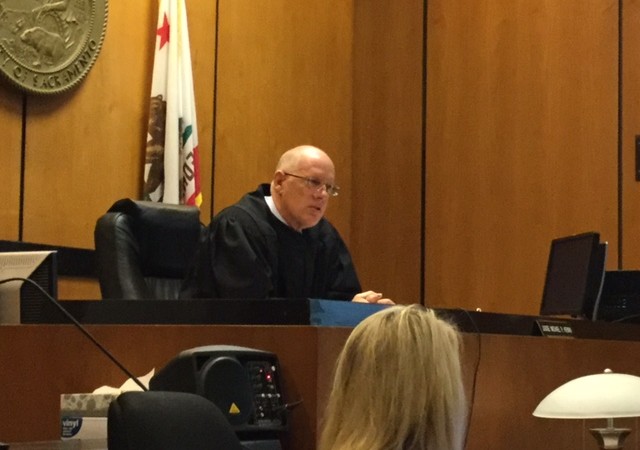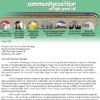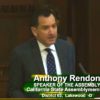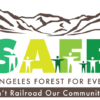California High-Speed Rail court decision: Putting Judge Kenny’s disappointing ruling in perspective
The court ruled on March 4, 2016 on the second Tos/Fukuda/Kings County case as a result of the February 11th hearing. The judge dismissed the case as premature & would not be ready (ripe) to be heard until the Authority files a second funding plan outlining what exactly it is going to build.
Judge Michael Kenny, Superior Court Judge in Sacramento disclosed that “there are too many unknown variables, and in absence of a funding plan, too many assumptions that must be made as to what the authority’s final decisions will be.” That was a disappointment to project opponents since the judge did not use the promised “snapshot” approach that seemed to be the only way for a course correction for a project on the way to almost inevitable non-compliance.
One has to wonder if politics might have had a hand in the decision, after all, the release of the decision was timed perfectly for the Authority’s board meeting, perhaps a coincidence. The decision was made on a Friday but released on a Tuesday, board meeting day. Or perhaps in the end, the judge was a little gun-shy, concerned about being overturned since being too early was one of the Appellate Court’s themes when the first Tos case was partially overturned. Maybe a little of both but it’s doubtful we’ll ever know. The ruling does not allow Authority to access Prop 1A bond funds, the biggest chunk of money dedicated to the project. The Rail Authority must come up with a valid 2nd funding plan showing they are in compliance with the bond act, no small feat.
What we do know is the judge agreed with defendants that Prop 1A was only about the use of state bonds and not a set of restrictions on the project, therefore leaving the door open for them to continue to spend on construction without complying with system guidelines in the bond act. According to Stuart Flashman, attorney for the Central Valley clients, it’s too bad that the court bought into the Authority’s argument that Prop 1A was all about the use of bond funds.
In addition the Authority doesn’t appear to be following CEQA and the extra protections it provides due to a ruling by the Surface Transportation Board more than a year ago. Federal environmental guidelines aren’t as strict as California state guidelines.
It was always anticipated that the project would use a combination of funding sources but it seems to the judge that the Prop 1A regulations about the system regulations only come into play when the Authority was going after state bond funds. A real let down, particularly to those Central Valley landowners who are losing their properties now to possibly a non-compliant project. It’s actually not too early for them but rather too late.
It should be noted that Prop. 1A’s Ballot Summary was declared illegal after the passage of Prop 1A. It was decided by the Court of Appeal that the Legislature does not have the final say in the description put on the ballot. Most felt the description read like a marketing pitch and the Third District Court of appeal agreed. “The court’s ruling says that when the California State Legislature took it upon itself to dictate what the ballot language for Proposition 1A should be, it violated the provisions of 1974’s Proposition 9.”
Let’s talk about what this decision does and doesn’t do. It clearly doesn’t give the Authority additional funds. The decision only bought them time. They still are very short of construction funds since they can’t access Prop 1A funds until they file a second funding plan. Apparently that’s where the scrutiny will come in, that is, if they ever file one. Read the first of two articles (Part I and Part II) about the business plan by this author published the day before the ruling.
Clearly the Authority did win in this “justice delayed” decision since the court did not stop federal funds or cap-and-trade funds from being spent, a clear win for the Authority.
In an article by Court House News Authority Board Chairman Dan Richard said that Kenny’s ruling “confirms that we are indeed delivering a fast, modern and environmentally friendly high-speed rail system that meets the voter-approved requirements under Proposition 1A.”
Nothing could be further from the truth. The judge in fact said that “…project opponents have produced evidence that raises substantial complaints about the currently proposed project’s ability to ultimately comply with the Bond Act, the Authority has yet to produce the funding plan that makes those issues ripe for review.”
Actually you could see the judge’s point since the Rail Authority did a complete about-face when it changed the building direction in the newly released 2016 business plan, heading north instead of heading south. Richard admitted in a SF Gate article, “We didn’t have the money to get to LA.” And guess what? They don’t have the money to get to San Jose either, therefore this decision does not insure the project will go forward. But the change in route wasn’t before the court and frankly wouldn’t have mattered since a 2nd funding plan has not been filed yet, which would cement in the plan the Authority was going to build.
Travel Time and Blended System:
The Authority clearly won on a couple of key points. First already discussed, they could continue to spend federal and cap-and-trade funds. The second win and very important to San Francisco peninsula neighborhoods was it was OK to build two tracks for the blended system since there were modifications in the 2012 EIR that allowed for this possibility.
But Kenny said there were still problems with the blended system. The ruling declared, “It appears at this time, that the Authority does not have sufficient evidence to prove the blended system can currently comply with all of the Bond Act requirements…” But the decision left open for changes because sometime in the future they may be able to comply, which bolstered the “too early,” argument. Clearly without a funding plan that nails down the final construction plan required for each segment, plans about how the Authority builds the project are in a state of flux.
Though Judge Kenny said travel time was one of the issues that was premature to be addressed, he went out of his way to say there were problems and several areas that the Authority’s blended system didn’t quite cut the mustard and he wanted them to know. “It was sort of a warning shot over the bow,” said Attorney Stuart Flashman.
The judge told the Authority in his decision, though very diplomatically worded, he had concerns about the charts submitted to prove a 30-minute travel time requirement between San Francisco and San Jose could be met. Read page 14/15 of the decision for the whole story but in a nutshell he explains a process that he didn’t think was quite kosher. The Authority attempted to show the travel time results of a train traveling 125 mph on a chart that represented it would run at 110 mph with “no clear explanation for this change in conclusions, other than an email exchange requesting that the consultants disregard the 125 mph proposal.” (And note that the Authority’s documents show that the train will run at 110 mph.)
The ruling also stated that on February 11, 2013, this 30-minute travel time at 110 mph was presented to the Authority via a memorandum. The memorandum indicated that “(f)urther improvements may be achievable through improved train performance, use of tilt technology, more aggressive alignments and higher maximum speed.”
He said he also found it troubling that the Authority’s attempt to measure travel time in the San Francisco to San Jose corridor used Caltrain’s station 4th and King and not the Transbay Terminal. The judge wrote, “…it appears that the intent of the Bond Act was for the system to extend, in San Francisco, to the Transbay Terminal, not stop 1.3 miles short at a 4th and King Caltrain Station.”
In addition to telling them their travel time numbers were off and their route was too short, Kenny goes on to explain that they can’t meet the 12 trains per hour requirement, described as a five-minute headway in the Bond Act (time between trains.) Being generous, even counting commuter rail trains, the maximum the corridor could produce was 10 trains per hour. Without commuter rail, there was only a maximum of 4 high-speed trains per hour, netting best-case scenario, only one train every 15 minutes. Fact is the Authority is planning 2-4 trains per hour so the time between trains could be even higher. This matters because high ridership is dependent on having lots of trains. The more ridership, the more revenue is produced.
By the way, even if the court was ready to judge violations of Prop 1A, which it was not, the public should understand that the plaintiffs’ were working with a real handicap since the court shut the door on their expert testimony.
This is due to deference the court shows to a governmental agency. The judge gave the Authority every advantage by requiring the opponents to challenge the board only with materials that were in front of the Authority at the time the April 2014 business plan was published. As unfair as this appears, it’s the way the system works.
Instead project opponents were in the position to disprove the Authority’s claims by showing Authority experts did not demonstrate that they had substantial evidence behind their analysis. Such as the ludicrousness of traveling 220 miles an hour down a mountainside, just plain nuts to even the non-technical observer, not discussed in this decision but discussed at the court hearing. This evidence supporting travel time will not change whether a funding plan is filed or not. It was troubling it wasn’t addressed since the judge addressed the 30-minute section between San Francisco and San Jose. Afterall at the hearing, when Deputy Attorney General Sharon O’Grady stated that the plaintiffs were questioning the Authority’s experts the Judge interrupted and told her, “Oh, I think he’s doing more than just disagreeing with the experts, I think what Mr. Flashman is also doing is highlighting certain assumptions that the expert provided upon reaching his conclusions.” The judge’s comment nearly took O’Grady’s breath away.
Blended System Funding:
Though the Legislature appropriated $600 million in construction dollars from Prop 1A bond funds for electrification along the San Jose to San Francisco corridor, there is no indication that Caltrain will be able to get those funds anytime soon. Caltrain may experience big delays unless they can find a substitute funding source. There is another problem in that before any funds can be released for Caltrain a 2nd funding plan must be approved before any construction dollars are spent using Prop 1A funds. The Authority hasn’t submitted any plan for the Caltrain corridor or as the court indicated, or any segment yet.
While Southern California projects were not identified at the time of the July 2012 Budget Bill (SB 1029), $500 million was appropriated for early investments there. Those dollars are at risk as well.
Financial Viability:
The court did not rule on this subject either, claiming it was premature and yet to everyone closely watching the project, it’s crystal clear. While it is true the route could change in whatever the final funding plan is finally decided, there is no doubt that the project does not have the funding to build the infrastructure or to sustain operations without a subsidy.
This project must be self-sustaining on a financial basis according to Prop 1A. The lawsuit was about the first 300 miles heading south which will cost between $31 and $40 billion. The Authority has said the first 130 miles would cost $6 billion but the problem is they can’t get their hands on the $2.7 billion of Prop 1A, part of that $6 billion number, though those funds were appropriated in July 2012. As explained before, appropriation of funds doesn’t automatically give the project money. They had to meet certain Prop 1A requirements. See page 88 under the risk area of the newest business plan, it says this, “Continue to identify all necessary sources for the $6 billion cost of the first construction segment in the Central Valley. “So even they are admitting they don’t have the first $6 billion in the bank and they are required to have the whole usable segment- that’s the $31-40 billion dollar number. Now as we know from the new business plan, they’ve switched going north and say the 250 miles will cost $20.6 billion.
To fill the gap, the project is heavily dependent on cap-and-trade funds, which currently are not committed beyond 2020 and are estimated at only $500 million per year. Read the section of this article titled, “Cap-and-Trade- otherwise known as the everything to everybody funds.”
But in the end, the decision is about losing trust with the voters who believe that their vote gave permission for the state to go forward with only specified actions. Did the public believe that the Authority could build any kind of high-speed rail system without the system guidelines outlined in Prop 1A? It is doubtful since together all federal, state and private investment funds were envisioned to construct one high-speed rail system. See Senator Lowenthal’s report on the original intentions prior to the passage of Prop 1A in 2008. It would seem with the court’s current thinking, which counsel Flashman believes is “misconstrued”, that the Authority is free to build what they want as long as bond funds are not used.
Dan Walters wrote an opinion piece for the Fresno Bee that explains this perfectly. “These are no small questions because California’s governance is now largely driven by initiatives and measures placed on the ballot by the governor and the Legislature, with many more coming on next November. Therefore, voters must trust that what they were told will come to pass, and if they don’t, the governance system erodes.”
This decision no doubt will be problematic to the public.
Nobody wants the blame of killing the project, but no doubt, it will die, it’s just a matter of when and by whom.
There are many lawsuits still not heard that could end the project. See the TRANSDEF site for the outline of current suits still working their way through the courts. However, regarding this case, if they don’t appeal, the only way the opponents will get another bite at this apple is to file a new lawsuit if and when the Authority files a 2nd funding plan. But there is a thin time frame between too early and too late so it will have to be done quickly.
Stuart Flashman believes the project is going to run out of money, and will eventually die. The question is, is it going to be a slow death or a quick death. He says, “we tried to administer a coup de grace, but we were denied the opportunity” by the court’s ruling. But Flashman believes that the public should put pressure on the Legislature to have them give the Authority a coup de grace, that is, provide the project a quick, merciful death rather than a slow painful one, since the current project’s demise is inevitable. If the Legislature allows it to linger on, it will only be allowing it to waste billions of taxpayers’ dollars.
Yes in the end, the slower the project’s end, the more money will be wasted but more important is the lives it will destroy during the process. What a tragedy.





